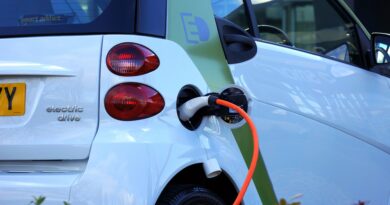Environmental impacts of lithium mining and how to minimize it
Introduction
Lithium is a valuable and highly sought-after metal that is used in a variety of applications, including the production of batteries for electric vehicles and electronic devices. As demand for lithium continues to grow, so does the need for lithium mining, which can have significant environmental impacts.
One of the primary environmental concerns surrounding lithium mining is the impact on water resources. Lithium is often found in brine pools or salt flats, and extracting it requires pumping large quantities of water out of the ground. This can lead to decreased water levels and reduced availability of water for local communities and ecosystems.
Lithium mining can also contribute to air pollution, as the refining process generates greenhouse gases and particulate matter. In addition, the construction of infrastructure, such as roads and pipelines, can disrupt local ecosystems and contribute to habitat destruction.

Another concern is the potential for contamination of soil and water through the release of chemicals used in the mining and refining process. This can have serious consequences for the health of local communities and ecosystems.
Despite these concerns, there are ways to mitigate the environmental impacts of lithium mining. For example, responsible mining practices that prioritize sustainability and minimize water usage can help to reduce the impact on water resources. In addition, the use of renewable energy sources during the refining process can help to reduce greenhouse gas emissions and air pollution.
Points to consider while discussing the environmental impacts of lithium mining
Land use
Lithium mining often requires the development of new infrastructure, such as roads, pipelines, and processing plants, which can lead to habitat destruction and disruption of local ecosystems.
Waste generation
The mining and refining process generates large amounts of waste, including tailings, slag, and other by-products, which can contaminate soil and water if not properly managed.
Biodiversity loss
The construction of mines and other infrastructure can lead to the loss of habitat and the displacement of plant and animal species.
Water quality
Mining and refining processes can release chemicals into the water, potentially contaminating local water sources and harming aquatic ecosystems.

Air quality
The refining process generates air pollution in the form of greenhouse gases and particulate matter, which can have negative impacts on air quality and human health.
Social impacts
Lithium mining can also have social impacts, such as the displacement of local communities and conflicts over land use and resource access.
Sustainability
It is important for mining companies to consider the long-term sustainability of their operations and implement measures to minimize the environmental impacts of mining. This could include using renewable energy sources, minimizing water usage, and properly managing waste.
The advantages of lithium battery-powered electric vehicles (EVs) over gasoline-powered vehicles

Energy efficiency
Lithium batteries are much more energy efficient than gasoline engines, which means that EVs can travel further on a single charge and use less energy overall.
Cost savings
In addition to the initial purchase price, EVs can also save money on fuel costs over time. While the price of gasoline can vary significantly, the cost of electricity to charge an EV is generally much lower and more stable.
Performance
Many newer EVs are designed to have quick acceleration and a smooth, quiet ride, thanks to the instant torque and lack of engine noise provided by electric motors.
Low maintenance
EVs have fewer moving parts than gasoline-powered vehicles, which means they require less maintenance and have a longer lifespan.
Zero emissions
One of the biggest advantages of EVs is their zero emissions, which means they do not produce any tailpipe pollution and can significantly reduce overall greenhouse gas emissions.
Convenience
With the development of charging infrastructure, it is becoming increasingly convenient to own and drive an EV. Many cities and towns now have public charging stations, and some newer EVs have a range of over 300 miles on a single charge.
Overall, while there are still some challenges to be addressed in terms of the cost and availability of lithium batteries, electric vehicles offer many advantages over gasoline-powered vehicles and are likely to play an increasingly important role in the future of transportation.




